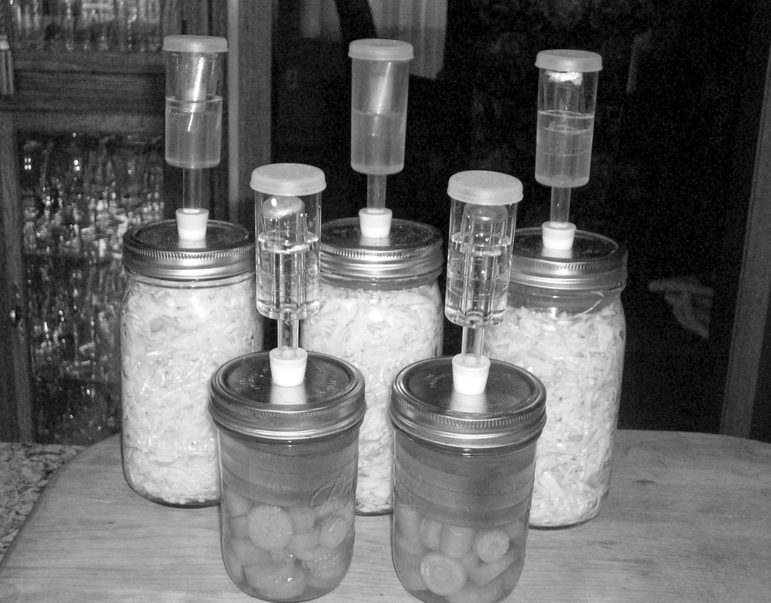
Photo by Diana Ferrari
Veggies Fermenting in Mason Jars
There’s nothing quite like fresh, crisp veggies straight from the garden, but by late summer, you may be up to your ears in produce if you have your own garden. You can buy organic items but you can only be certain if produce is organic when YOU do the planting. So what will you do with all those healthy extras? Freeze ’em! It’s easier and faster than canning. Healthy tip: high temperatures incurred by the canning process destroy enzymes and nutrients.
Time is of the essence. Make sure you’re ready to freeze your harvest immediately after you pick it. The longer it sits, the more flavor and nutritional value it loses. If you can’t freeze your vegetables right away, store them in the refrigerator until you’re ready to start the freezing process.
After the vegetables are washed, cut them into small pieces. Think about how you will use each veggie and cut them accordingly. Blanch away. Blanching stops the active enzymes that determine the color and flavor of the vegetables. All it takes is putting your produce in boiling water for a bit. Immediately after the veggies are finished blanching, plunge them into a bowl of ice water to cool. Drain them once they’re cooled, and get ready to pack them away.
Another old-time method, making a tremendous come-back, is to ferment vegetables and fruit. No electricity is required. This process produces crunchy, tasty items that are still full of enzymes and nutrients. What a wonderful way to get probiotics! We use pink Pink Himalayan sea salt which contains over 84 minerals and trace elements, including calcium, magnesium, potassium, copper and iron; so it does much more than just make your food tasty. Read up on the fermenting process and do yourself a healthy favor.